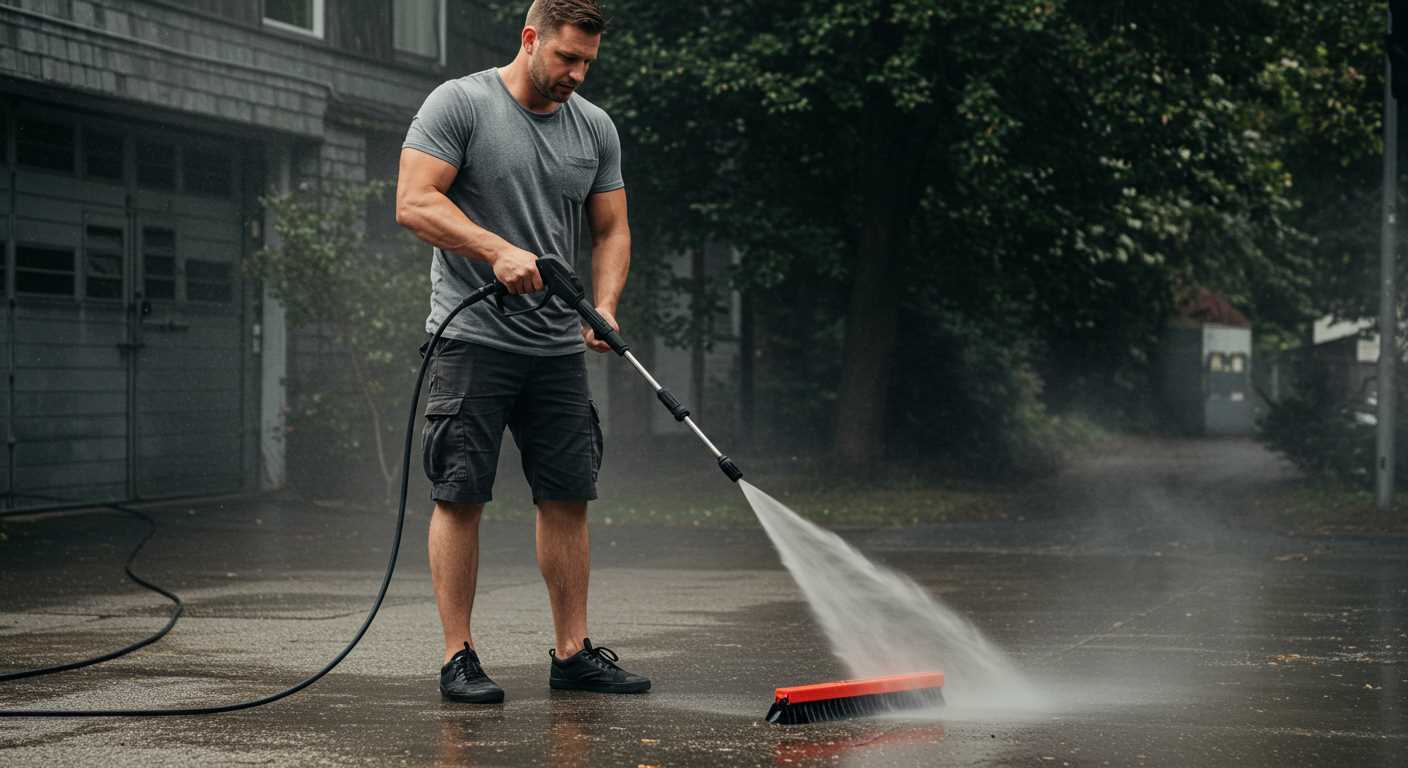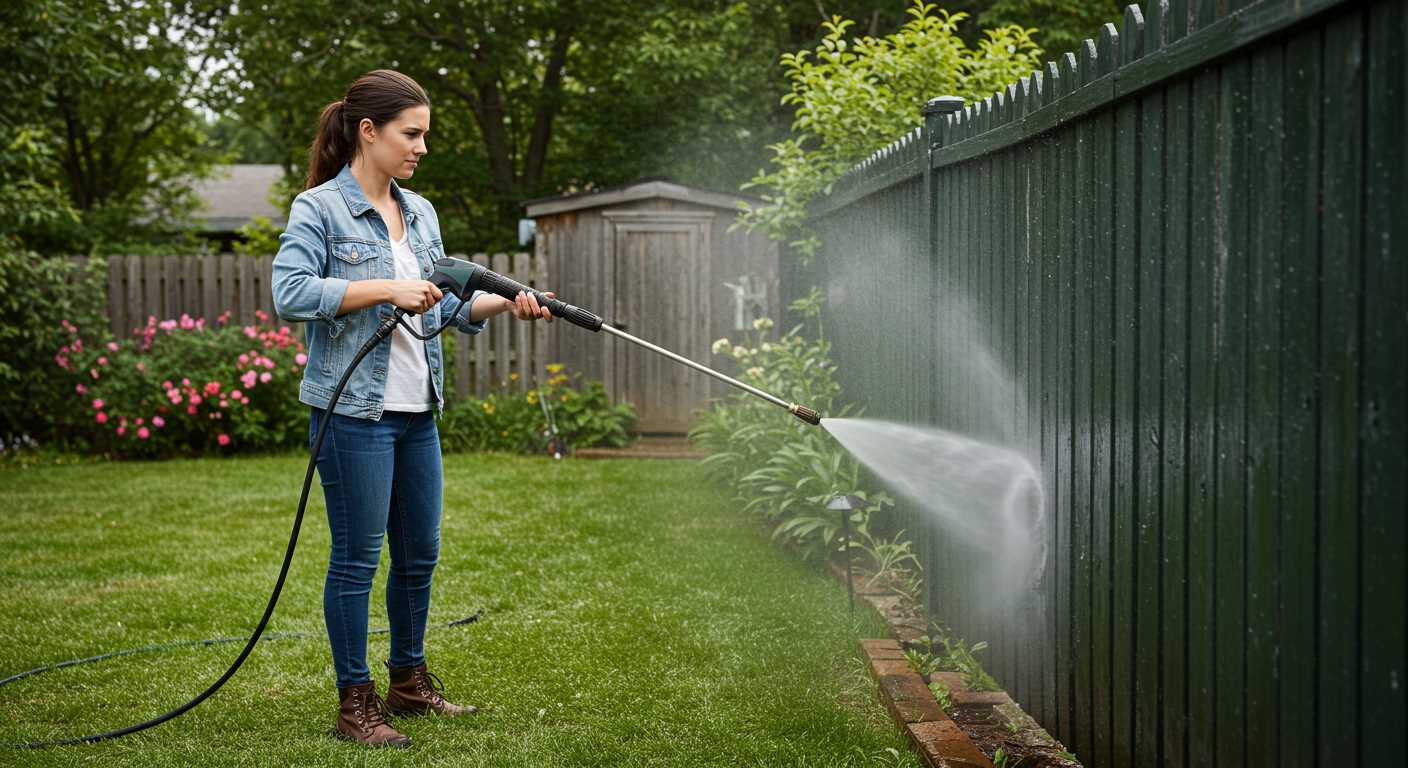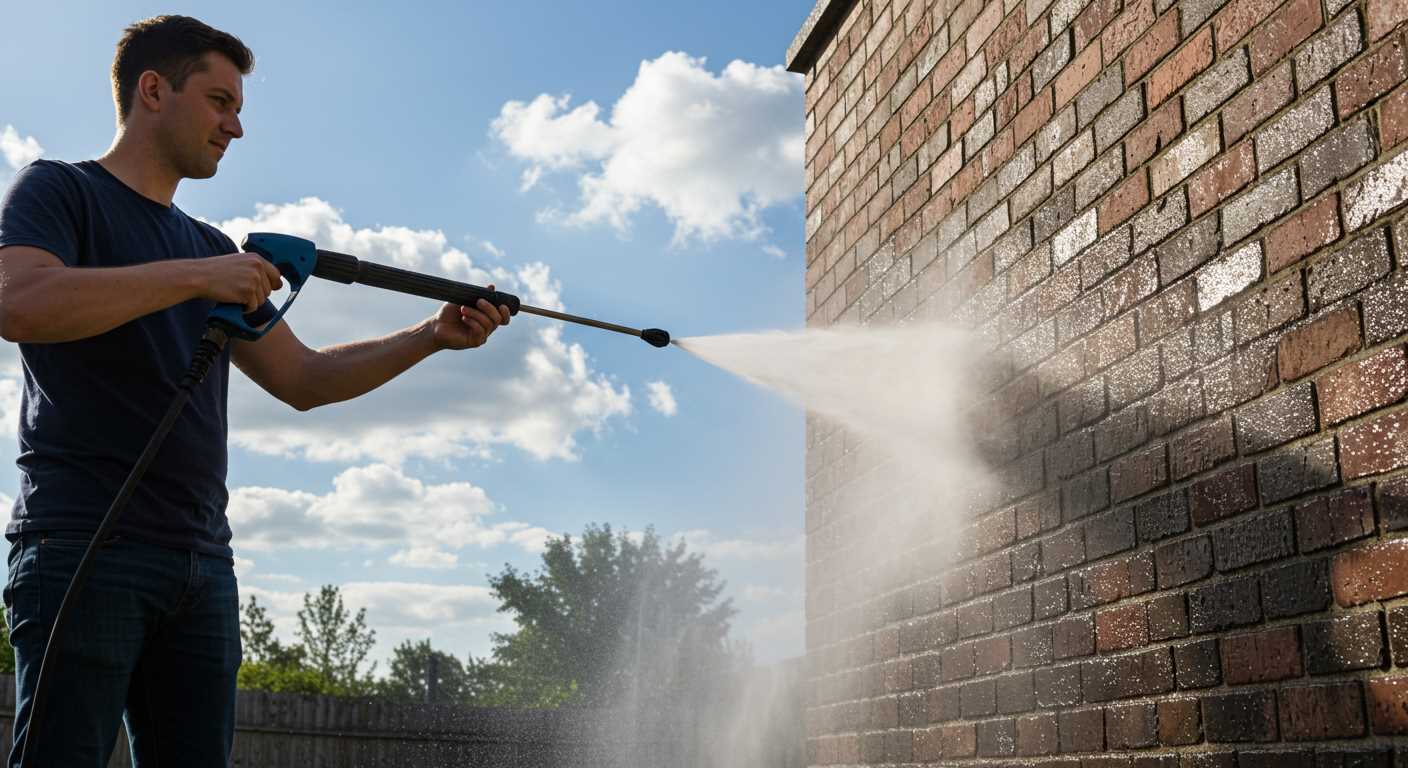



For optimal performance, select a cleaning unit with a pressure rating between 3000 and 4000 psi. This range is ideal for tackling tough grime, oil stains, and other stubborn materials on various surfaces such as concrete, brick, and metal. A higher pressure output ensures that even the most challenging cleaning tasks are completed effectively, minimising the number of passes required.
In addition to pressure, consider the flow rate measured in gallons per minute (GPM). A machine that delivers between 2.5 and 4 GPM will complement the pressure levels, ensuring thorough rinsing and faster cleaning results. This balance of power not only enhances efficiency but also reduces the overall time spent on each project.
Recognising that every task may require specific considerations, adjusting the nozzle type and spray pattern accordingly can further optimise performance. Utilize a narrow spray for targeted cleaning and a wider pattern for rinsing large areas. Understanding these dynamics will significantly improve the effectiveness of your cleaning sessions.
Understanding PSI Ratings for Pressure Washers

For heavy-duty tasks, I recommend equipment with a minimum of 3000 to 3500 psi. This rating effectively removes tough grime, grease, and mildew from various surfaces. For lighter applications, models with 1500 to 2500 psi suffice, making them suitable for smaller jobs like cleaning patios or vehicles.
It’s essential to match the pressure rating to the cleaning task; using an overly powerful machine on delicate surfaces can result in damage. Likewise, an underpowered model may fail to clean adequately, leading to frustration and wasted time.
Different nozzle attachments further enhance versatility. A zero-degree nozzle delivers concentrated power for stubborn stains, while wider angles, such as 25 or 40 degrees, are effective for broader surfaces without risking harm.
When assessing equipment for regular use within a business, durability and flow rate also come into play. A higher GPM (gallons per minute) combined with an appropriate pressure rating ensures quicker cleaning without constant refilling of water tanks.
Regularly check and maintain the equipment for consistent performance. Replace worn-out hoses and nozzles to maximise efficiency and prolong the lifespan of your machine.
Recommended PSI for Different Cleaning Tasks
For light tasks such as washing cars and garden furniture, a range of 1200 to 1900 is ideal. This level effectively removes dirt without risking damage to paintwork or delicate surfaces.
For surfaces like patios and decks, aim for 2000 to 3000. This pressure is sufficient to tackle stubborn grime that accumulates over time while remaining safe for most materials.
When dealing with tough stains on hard surfaces, such as concrete or brick, opt for 3000 to 4000. This powerful force is necessary to break down embedded dirt and stains effectively.
Industry professionals often use machines with ratings above 4000 for heavy-duty tasks like stripping paint or cleaning industrial machinery. Such pressure can swiftly eliminate the most tenacious residues.
For delicate surfaces like roofs, maintaining a lower strength of around 1000 to 1500 helps prevent potential damage while still ensuring effective cleaning.
Always adjust nozzles according to the task. A wider spray is gentle enough for light jobs, while a narrow spray maximizes force for tougher cleaning requirements.
Impact of PSI on Surface Material Types
For effective cleaning, understanding the interaction between pressure settings and surface materials is crucial. Generally, softer surfaces like wood, vinyl siding, and painted surfaces require lower pressure levels, typically between 1200 to 2000 psi. This range prevents damage while adequately removing dirt and grime.
Hard Surfaces
When tackling more durable materials such as concrete, brick, and stone, a higher pressure setting of around 2500 to 3000 psi can be used safely. These surfaces often withstand greater force without sustaining damage, making them suitable for heavy-duty cleaning tasks. However, caution is still necessary to avoid etching or chipping.
Specialty Materials
For specialized surfaces like cars or delicate fabrics, a gentle approach with approximately 1000 to 1500 psi is recommended. Such materials can easily be marred, and using excessive force may lead to irreversible damage. It’s advisable to use a wide nozzle and maintain distance to ensure a soft touch while achieving effective results.
Ultimately, careful adjustments to pressure levels based on the surface being cleaned will yield optimal outcomes and prolong the lifespan of both the surface and the cleaning equipment.
Choosing the Right PSI for Commercial Vehicles
For cleaning commercial vehicles effectively, a power level of 2000 to 4000 is ideal. This range provides sufficient force to remove grime, dirt, and road debris without damaging the vehicle’s surface.
Factors Influencing Pressure Selection
.jpg)
- Type of Vehicle: Heavy-duty trucks require more force than lighter commercial vans.
- Surface Material: Painted surfaces should not exceed 2500, while unpainted or metal surfaces may tolerate higher levels.
- Cleaning Solutions: The use of detergents can lower the necessary force, allowing for efficient cleaning at lower settings.
Recommendations Based on Vehicle Type
- Light Duty Vans: 1500 to 2500 for routine washing.
- Medium Duty Trucks: 2500 to 3500 for effective grime removal.
- Heavy Duty Equipment: 3500 to 4000 to tackle stubborn residues and grease.
Using the appropriate force not only maximises cleaning efficiency but also extends the life of the vehicle’s finish, preventing unnecessary wear. Always test on a small area first to ensure compatibility with the surface being cleaned.
Balancing Pressure and Water Flow Rate for Optimal Performance

For maximum efficiency, focus on achieving a balance between water pressure and flow rate. A combination of 3000 PSI and 2.5 GPM (gallons per minute) is often ideal for most commercial applications. Higher flow rates can enhance cleaning capabilities by allowing debris to be rinsed away more easily.
Calculating the Right Ratio
Determine the optimal ratio by multiplying the PSI by the flow rate. For example, a unit with 2000 PSI and 2 GPM yields a performance rating of 4000. This number helps evaluate strength while considering cleaning time efficiency. Target a performance rating above 4000 for tougher tasks.
Understanding Flow Rate’s Role
A higher flow rate reduces cleaning time, especially on larger surfaces, by providing a continuous stream of water to assist in lifting stubborn dirt and grime. Ensure the equipment chosen delivers adequate volume alongside suitable pressure to maintain effectiveness, particularly for intricate jobs like graffiti removal or vehicle detailing.
Common Mistakes When Selecting PSI for Pressure Washing
One prevalent misstep is equating a higher rating with superior cleaning capability. Oftentimes, individuals believe that intense pressure results in better outcomes, but this can lead to damage on delicate surfaces. Opting for a unit with excessive force might create gouges or degrade finishes.
Another mistake involves disregarding the cleaning requirements of specific materials. Different surfaces require tailored approaches; using unsuitable power can yield poor results, or worse, cause harm. It’s critical to assess the surface in question before selecting equipment.
Failing to consider the proper nozzle size can also compromise the washing effectiveness. A nozzle designed for high-pressure output may not provide the desired coverage, leading to uneven cleaning and requiring additional effort. Matching the nozzle to the task can significantly enhance results.
Overlooking Water Flow Rates

I’ve seen many overlook the importance of water flow rate while fixating solely on pressure. Inadequate flow can hinder the cleaning process, as water needs to discharge efficiently to lift grime and dirt. Balancing both aspects ensures optimal performance without risking damage to surfaces.
Neglecting Preparation and Safety
Lastly, many neglect the importance of proper preparation and safety protocols. Failing to secure loose items or protect surrounding areas can lead to accidental damage. Likewise, overlooking safety gear may increase risks during operation. Taking these precautions ensures not only a better cleaning outcome but also safety during the task.
Adjustable Options in Commercial Machines
A versatile cleaning unit with adjustable settings is indispensable for varied tasks. Many models allow users to fine-tune the output to match specific cleaning demands and surface materials. Typically, these machines feature a variable pressure control, enabling adjustments from low, gentle washes to high-pressure blasts for stubborn grime.
Advantages of Adjustable Settings
Customisable pressure extends the scope of applications, making it easier to clean delicate surfaces like wood or painted finishes without risk of damage. Conversely, the robust settings tackle heavy-duty tasks, such as removing grease from industrial floors. This adaptability reduces the need for multiple machines, streamlining operations and saving costs.
Considerations for Selecting Adjustable Models
When choosing an adjustable system, assess the maximum and minimum pressure ranges. Ensure they align with intended applications. Additionally, look for features such as easy-to-use dials or digital displays for precise adjustments. User-friendly interfaces save time and enhance overall effectiveness, particularly under demanding conditions.
| Surface Type | Recommended Pressure Range |
|---|---|
| Delicate materials (wood, painted surfaces) | 500 – 1500 PSI |
| Hard surfaces (concrete, brick) | 1500 – 3000 PSI |
| Heavy-duty cleaning (vehicles, machinery) | 2500 – 4000 PSI |
In my experience, investing in a unit with adjustable capabilities not only enhances efficiency but also extends the equipment’s lifespan, as the user can deploy the right amount of pressure for each task. This flexibility is a hallmark of quality appliances in the cleaning industry.
FAQ:
What is the recommended PSI for a commercial pressure washer?
The recommended PSI for a commercial pressure washer typically ranges from 3000 to 4000 PSI. This level of pressure is effective for various cleaning tasks, including removing dirt, grease, and grime from surfaces like concrete, asphalt, and vehicles. A pressure washer with this PSI range offers the power needed to tackle tougher jobs while still being manageable for operators.
How do I determine the right PSI for my specific cleaning task?
To determine the right PSI for your specific cleaning task, consider the surface material and the type of dirt or stain you are dealing with. For example, a PSI of around 3000 is suitable for cleaning concrete driveways, while a lower PSI of about 1500 to 2000 is more appropriate for washing vehicles or delicate surfaces. Additionally, always consult the manufacturer’s recommendations for the surface material to avoid damage.
Are there any safety considerations when using a high PSI commercial pressure washer?
Yes, safety is paramount when using a high PSI commercial pressure washer. First, ensure you wear appropriate protective gear, including goggles, gloves, and sturdy footwear. The high pressure can cause injury if the nozzle is misdirected or if the water stream strikes the skin. Additionally, be cautious of the potential for debris to be propelled by the high-velocity water. Keeping a safe distance from the surface being cleaned and never pointing the nozzle at people or animals is crucial. Always read the user manual and follow any additional safety instructions provided by the manufacturer.







